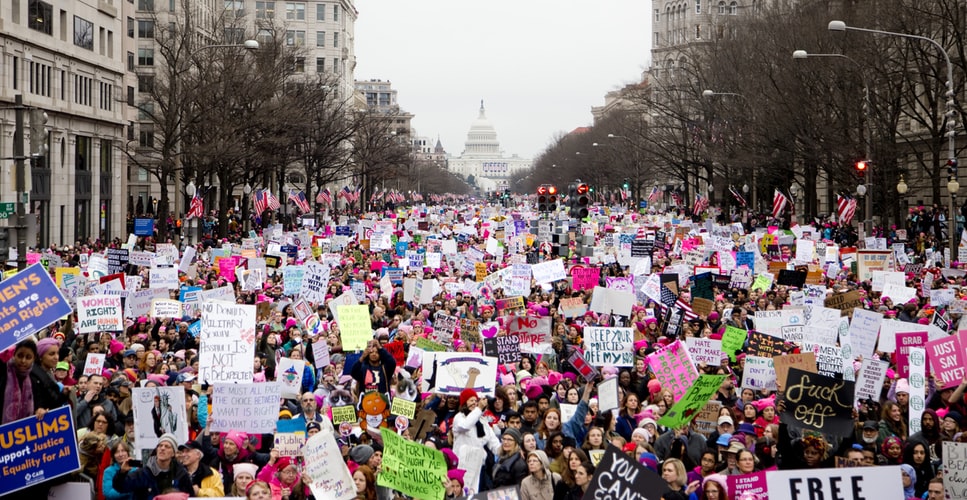Reclaiming art: paint against persecution
Picasso, famed for the abstract, made an exception — tits. In The Women of Algiers they stand out, stark and unambiguous. Renoir, pioneer of the Impressionist nude, made an incriminating confession: “It is with my brush that I make love”. Now, as spotlighted by artistic protest to the proposed abortion bans, what was once a means of objectification is now a means of objection.
So far this year, nine US states have proposed early abortion bans, with the most notable being Alabama’s all-restrictive ban on abortions from week zero of pregnancy, with no exceptions for rape or incest. Protest has been extensive. Netflix’s threat to boycott the state of Georgia as a filming location has been among the most publicised, while thousands have rallied across the country. Art is used as a form of protest at these demonstrations, with one sign reimagining the female reproductive system as an incensed snake. The caption is cautionary and commanding: “don’t tread on me”. Another displays the naked female body, bold and unapologetic: “this is not the property of the government”. Visibly, protesters are using female anatomy to defend female anatomy.
What was once a means of objectification is now a means of objection
However, art as a form of protest transcends cardboard placards. Artist Paula Rego was quick to condemn the anti-abortion drive as “grotesque”. Later this month, MK Gallery in Milton Keynes is hosting a retrospective of Rego’s work, and it could not come at a more desperate time. Following the 1998 referendum in Portugal, where not enough people voted to legalise abortion, Rego channelled her anger into a series of eight etchings. They seek to expose the realities of illegal abortions which are, of course, a dangerous inevitability when it is criminalised. Over twenty years later, she maintains that this series is “the best thing I’ve ever done, because they’re totally true”.
It is the truth of her work which makes it so powerful. As in Impressionist or Renaissance works, the female body is uncovered, and not to fetishise women, but to defend them. Her harsh lines and monochrome colour palette are a far cry from the soft, pastel shades of the Botticelli or Renoir nude. Her subjects are crouched, their faces are contorted; her work is uncompromising, charged and motivated, her women are real and suffering.
Renoir said “there are quite enough unpleasant things in life without the need to manufacture more”. He underestimated his own craft. He failed to realise that unpleasantries in art can tackle the unpleasantries in life. While his fictions of women as unblemished and statuesque are underwhelming beyond aesthetic value, artists such as Rego have instilled a strength into the vulnerable female body. While the historical nude was an expedient through which men catered to men, through the modern nude, women fight for women.
While the historical nude was an expedient through which men catered to men, through the modern nude, women fight for women
But how can we rejoice, when art like Rego’s has such a regrettable purpose? A woman’s right to her own body should not have to be defended – it should not be a point of debate at all. Whether it is by professional artists in galleries, or grassroots protesters making liberal use of the sharpie, this repurposing exposes the painful reality that we are falling behind our art. It is a cause for celebration, yes, but it also brings into light an urgent concern: in nine US states, the progress that is traceable in ink is no longer traceable in ideology. But art has a permanence, an agelessness, while legislation is mutable. We can only hope that art such as Rego’s, which aims to empower and defend women, outlives these backwards laws.

Comments